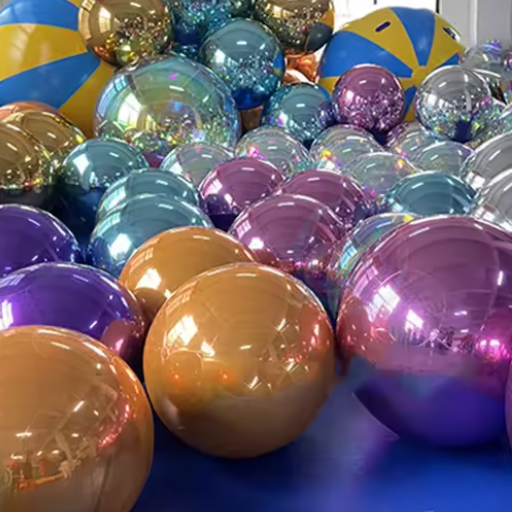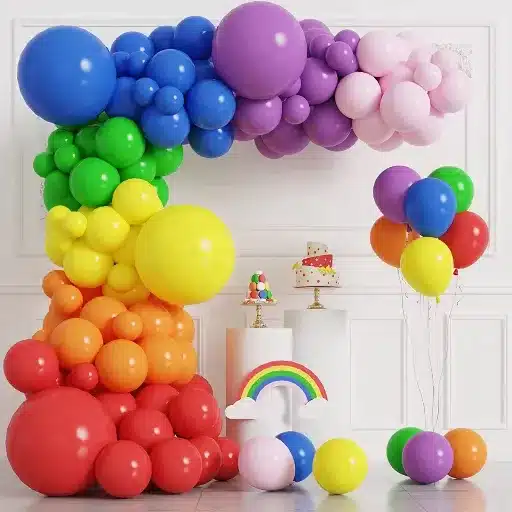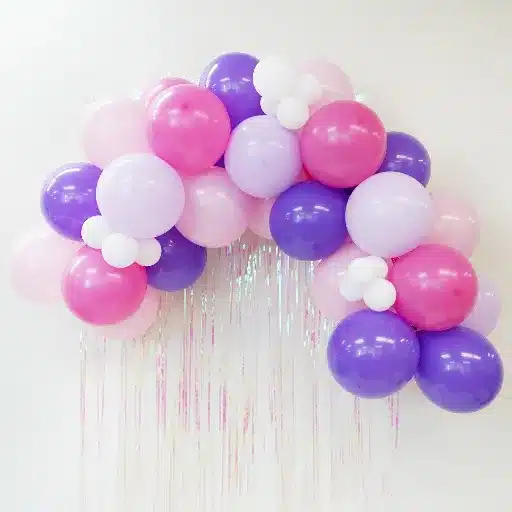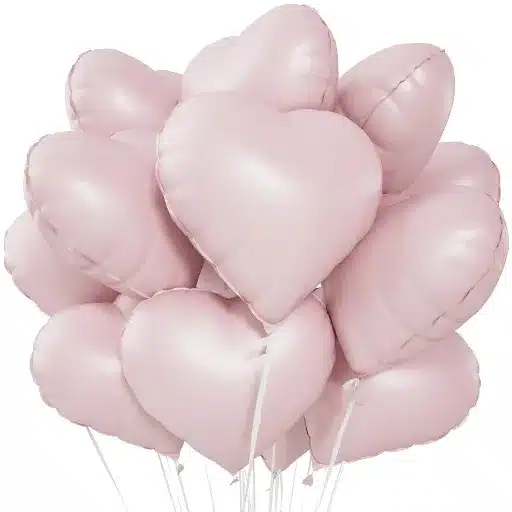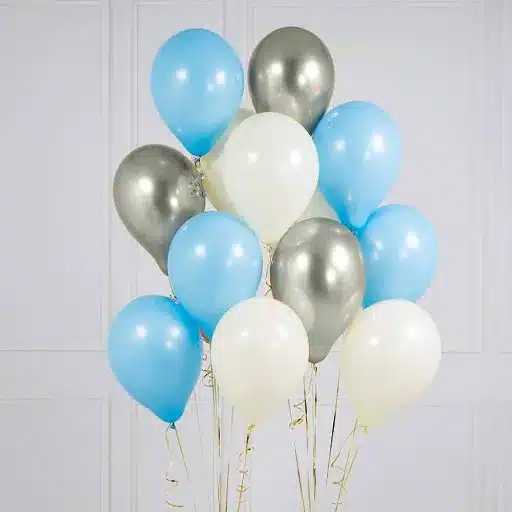Shiny foil balloons, indeed, can lend charm and festivity to any celebration from birthdays to weddings. Deflation and clean-up can, however, pose problems once the party is over. Knowing the correct method can be beneficial, whether for reusing the balloons on another occasion, reducing waste, or making cleanup easier. This manual aims to guide you through the step-by-step process of safely deflating your foil balloons, share storage tips, and explain how proper care can help them last longer. Get all set to learn everything you need to know about handling Mylar balloons with expertise!
Understanding Foil Balloons

Foil balloons, also known as Mylar balloons, are made from a thin layer of metalized plastic that makes them stronger and less porous than latex balloons, thereby increasing the retention of helium or air. They are favored for decorating special occasions due to their bright colors and attractive designs, and, if handled with care, they can be reused. Unlike latex balloons, foil balloons do not degrade; hence, they should be adequately managed and disposed of to reduce environmental hazards.
What are Foil Balloons?
Plasticized foil balloons are decorative balloons made from metalized nylon or plastic, known for their durability, bright colors, and non-biodegradability; thus, they should be disposed of responsibly to minimize environmental damage.
How Mylar Balloons Differ from Latex Balloons
|
Parameter |
Mylar Balloons |
Latex Balloons |
|---|---|---|
|
Material |
Metallic polyester film |
Natural rubber latex |
|
Durability |
Lasts up to 2 weeks |
Lasts 12-24 hours |
|
Cost |
Higher cost per balloon |
More affordable |
|
Appearance |
Shiny, metallic finish |
Matte or semi-glossy finish |
|
Customization |
Custom shapes and designs are available |
Limited customization options |
|
Environmental Impact |
Non-biodegradable, reusable |
Biodegradable, eco-friendly |
|
Helium Retention |
Retains helium longer |
Short helium retention |
|
Best Use |
Long events, formal occasions |
Short events, budget-friendly decorations |
|
Weather Resistance |
Resists heat and humidity |
Sensitive to heat and wind |
|
Reusability |
Reusable with proper care |
Single-use |
Common Uses for Foil Balloons
The dictionary, which is full of uses for foil balloons, says that these balloons are used mainly in celebrations and parties. Since special occasions provide excellent opportunities for people, these fancy balloons are often used to celebrate birthdays, anniversaries, and graduations. The most famous usage of foil balloons is probably number-shaped balloon sets for milestone birthdays, such as “50th Birthday,” while themed ones are typically used for kids’ parties. It would indeed not be incorrect to say that, according to recent statistics, the balloon decoration industry is growing at 5.2% per annum over the five years from 2022, and foil balloons play a significant role in this trend.
Weddings and Engagements
Grand foil balloon decorations are used in weddings and engagement parties or as a backdrop for their clever use. It comes in hearts, metallic finishes, and messages such as “I Do” or “Love,” creating a jovial and romantic ambiance. There has been a 29% increase in the search for “wedding balloon decoration” over the past five years, underscoring its growing importance in contemporary celebrations.
Corporate Events and Branding
Companies use foil balloons to promote sales, product launches, and corporate social responsibility initiatives. Such balloons can be custom-printed with logos, slogans, or thematic designs to hold the public’s attention and create brand visibility. With the rise of event marketing, companies often use foil balloons to create eye-catching displays in photographs.
Seasonal and Holiday Decorations
From Valentine’s Day to Halloween and Christmas, foil balloons are brought out to complement interior and exterior decorations. Sales of holiday-themed foil balloons reach their peak during such celebrations, with Valentine’s Day alone spewing millions of dollars every year on heart-shaped balloons.
Gifts and Bouquets
Foil balloons can be part of balloon bouquets or paired with gifts to make them a little extra special. For example, helium-filled foil balloons attached to a stuffed toy or flower arrangement are classic and nice gestures, especially for occasions like Mother’s Day or baby showers.
These diverse uses, backed by eye-catching designs and withstanding nature, make foil balloons a favorite in her private and public spheres. From personal celebrations to actual advertisements, foil balloons are the exact fun and graceful element for any occasion.
Why Deflate a Foil Balloon?
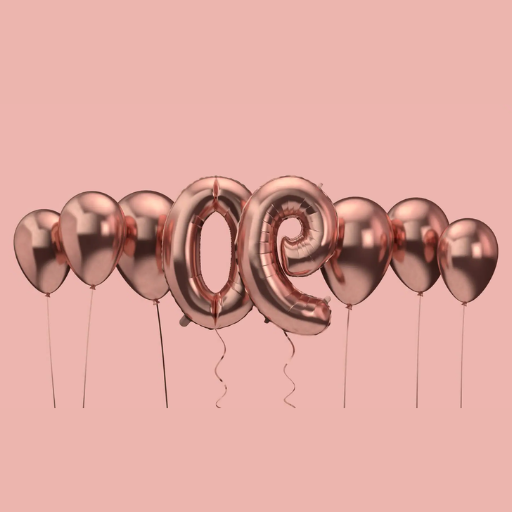
Deflating a foil balloon is necessary to store or dispose of it properly. The balloon must be deflated to some extent to reduce its girth; otherwise, it will be awkward to handle and can also pose problems if it becomes litter or an environmental hazard. The end of a balloon is deflated when it is thrown to prevent it from hurting wildlife: animals might mistake the deflated balloon for food. Balloons can be reused after being deflated and stored for later use; however, an inflated balloon requires a lot of space for storage.
Benefits of Deflating Foil Balloons
|
Key Point |
Benefit |
|---|---|
|
Reusability |
Enables multiple uses for future events |
|
Environmental Impact |
Reduces waste and landfill contribution |
|
Space-Saving |
Easier to store when deflated |
|
Cost-Effectiveness |
Saves money by reusing balloons |
|
Creative Reuse |
Can be used for crafts or gift wrapping |
|
Safety |
Prevents choking hazards for children |
|
Eco-Friendly Disposal |
Simplifies recycling and proper disposal |
When to Deflate a Mylar Balloon
The moment of timing must be right for deflating a Mylar balloon, considering both practical and environmental reasons. Those of us who use Mylar balloons at a party or any celebration must ensure that they are deflated after their utility is complete. Experts say that Mylar balloons can maintain form and float for as long as about two weeks or even longer, depending on environmental conditions. Another indication that the balloon should be deflated is when it starts to lose its buoyancy and no longer floats well.
If one forgets to deflate the balloon, it runs the risk of being littered or accidentally released into nature. Statistics have revealed that helium-filled balloons can travel a considerable distance when accidentally released into the atmosphere. Given that balloons can pose a danger to animals and clog up marine life, the Ocean Conservancy further reports that balloons are among the top five balloon threats to sea turtles and birds, who often mistake the remnants of balloons for food.
Additionally, storing deflated Mylar balloons saves space while allowing for reuse. Because the substance is resilient and can be reinflated, numerous users opt to deflate their Mylar balloons and store them safely until they can be used again. On the manufacturer’s advice, one can insert a straw or similar device to slowly let air or helium in or out, while maintaining the balloon’s good quality condition.
Environmental Considerations
Impact on Wildlife
Latex and Mylar balloons present tangible dangers to wild animals. Examples include sea turtles, birds, and several other species that may mistake the debris for food, resulting in unfortunate ingestion that can lead to blockages or internal injuries. Balloon shards are said to be some of the most hurtful debris for marine life, with almost 80% of the species ingesting them.
Non-biodegradable Materials
Mylar balloons are made out of synthetic substances that do not degrade easily in the environment. Latex balloons are sometimes claimed to be biodegradable, but they can take months or years to disintegrate, depending on environmental conditions. In the meantime, they may prove to be hazardous to animals or ecosystems.
Litter Contributions
Balloons released in the open air often end up as litter in areas far removed from where they were released. According to research carried out by cleanup agencies, balloon debris is increasingly being found in coastal areas and other natural habitats, thereby contributing to pollution and environmental degradation.
Depletion of Helium Resources
Helium is a limited resource that has already found numerous applications in various medical and scientific fields, including MRI machines and research equipment. Using helium for balloons wastes a limited resource for frivolous occasions, thereby raising questions about whether essential uses will be prioritized in the future.
Chemical Pollution
The varied chemicals used in many balloons, especially those shiny coatings with printed designs, include dyes and inks, which will start leaching in the environment as the balloons begin to lose their integrity upon degradation. These chemicals may contaminate the soil and water sources, thereby affecting plants and animals in the affected regions.
Steps to Deflate a Foil Balloon
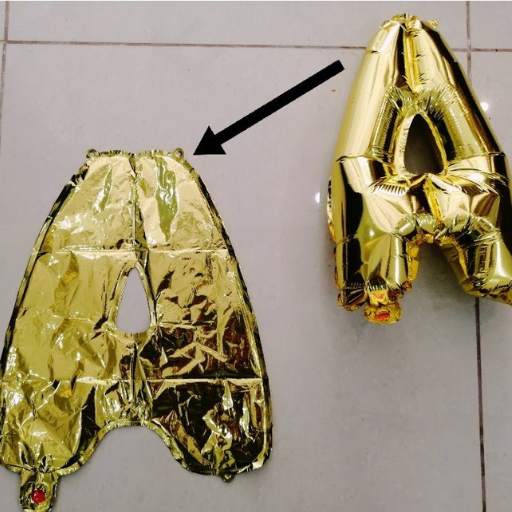
|
Step |
Key Point |
|---|---|
|
Locate the tab |
Find the tab at the balloon’s opening. |
|
Insert a straw |
Place a straw between the plastic slips. |
|
Release the air |
Push the straw until air starts escaping. |
|
Apply pressure |
Gently press the balloon to accelerate the deflation process. |
|
Fold the balloon |
Fold to remove remaining air completely. |
Gathering the Necessary Tools
All you need is a few tools and precautions to do this right, while keeping it safe and friendly to the environment. To deflate the foil balloon, you should have:
- A Straw or Balloon Stick:
A regular plastic or metal straw can be used on the self-sealing valve on most foil balloons. Insert it gently to let out the trapped air. Studies reveal that when people reuse items like straws instead of using disposable ones, plastic pollution is reduced. In 2022, plastic waste accounted for approximately 9 percent of worldwide waste production.
- Clean Scissors:
Scissors speed up the deflation process if small holes are cut. Do not cut large holes, however, as large scraps are more manageable to recycle or reuse.
- Container to Store Deflated Balloons:
Then select a sturdy container or bag in which to keep and protect the deflated balloons until they are needed again. A recent study shows that the reuse of foil balloons can extend their lifespan by 2 to 3 uses, thereby reducing the need for new purchases.
- Gloves (Optional):
When handling balloons stained or inked with dye, gloves will keep hands clean and guard against any residual chemicals. In these conditions, gloves may also prevent the wearer from direct exposure to microplastics released by degraded balloons, thus lowering contamination risks.
The right collection of tools lends to a more efficient and environmentally friendly deflating process.
How to Safely Deflate a Foil Balloon
To deflate the foil balloon safely, the first step is to locate the self-sealing valve, which is typically located near the base of the balloon. Then, insert a drinking straw or a similar slender object into the valve to ensure the passage of escaping air. After the straw is inserted, gently squeeze the balloon to force the air out. Continue letting air out until the balloon is fully deflated, and then slowly remove the straw. This method will keep the balloon intact for reuse or proper disposal.
Tips for Preventing Damage to Mylar Balloons
- Avoid Overinflation
Overinflating the balloon can cause a Mylar balloon to explode or to overstretch beyond its needed limit. Inflate the balloon to the size specified on the packaging, if available, to ensure maximum durability.
- Avoid Sharp Edges
Mylar balloons generally puncture with the slightest contact with an edge or a surface with a sharp edge. Avoid them from such pointed objects as scissors, pins, tree branches, or anything that could spell accidental doom.
- Controlled Environment Storage
Extreme temperature conditions may degrade Mylar balloon materials. Keeping them in a cool, dry place helps prevent synthesis caused by temperature variation or moisture.
- Avoid Excessive Sunlight
Prolonged wrath of sunlight could attack the surface of the balloon. Ultraviolet (UV) rays may fade the colors and make the material brittle, making it easier to tear or break.
- Ensure a Secure Setting Outdoors
Wind will play rough with the balloons against rough surfaces or objects, resulting in tears. Secure them with weights when used outside to prevent them from flying away or getting damaged.
Aftercare for Deflated Balloons
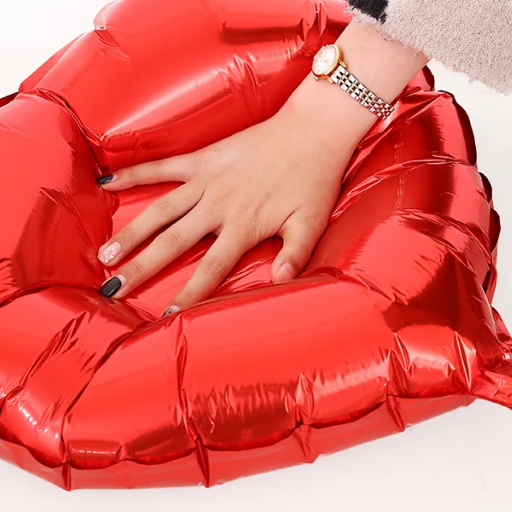
Dispose Responsibly
When balloons become deflated, dispose of them in the trash to prevent them from becoming environmental hazards. AVOID releasing them into the atmosphere.
Consider Recycling
Consult your local recycling programs to determine whether deflated Mylar balloons are accepted. If recyclable, they must be washed clean and free of any debris before recycling.
Reuse for Crafting
Deflated balloons could be used in the art of reusing for decorations or other creative projects.
Proper Storage of Deflated Foil Balloons
Properly storing deflated foil balloons can extend their usable life and help reduce the amount going to waste. This instruction will help maintain the quality for future use:
- Clean and Dry the Balloons
Very delicate wiping of the deflated balloons with a neat, clean, and damp cloth is necessary to remove dirt, dust, or any residue before proper storage conditions are considered. Let them air dry completely as storage before drying can make mold or mildew to set in.
- Folding Method
The folding method involves ensuring the balloon is fully deflated with no air inside, smoothing the balloon, and then gently folding it to reduce bending or damage to the metallic foil surface.
- Use the Airtight Option
Store folded balloons in a clean, dry, and airtight plastic bag or container. This keeps moisture, pests, or dust from affecting their quality over time. Label the container to keep track of its contents with ease when needed.
- Keep Away from Heat and Sunlight Directly
Direct sunlight and extreme temperatures would hinder the material’s performance, causing it to become brittle or fade. So, put those balloons in a cool, dark place away from windows or heat sources. According to experts, foil is sensitive to UV light; therefore, maintaining an optimum storage environment is essential for preserving its reflective quality.
- Longevity Statistics
Foil balloons, when stored properly, are said to last for many years without significant degradation. They say that updated research indicates proper care of a deflated Mylar balloon can be retained for up to 3-5 years of usage; thus, it is a good choice when the environment is to be considered for events or personal use.
Alongside environmental benefits, adhering to the storage instructions will help you extend the life of your foil balloons and reduce unnecessary waste.
Reusing or Recycling Mylar Balloons
As is well known, the reuse or recycling of Mylar balloons serves to reduce waste and extend their creative expression. The following are five productive suggestions of reusing or recycling Mylar balloons:
Reusable Decorations
Deflated Mylar balloons are stored in a deflated state for later re-inflation on future celebrations. They are durable enough to be reused several times, reducing the need for new decoration purchases.
Craft Projects
They may be cut into pieces for further craft projects, such as making unusual gift wraps, party banners, or even sparkly adornments for artwork.
Thermal Insulation
The reflective material from Mylar balloons can be salvaged for use in DIY projects, such as lining a bag or container to keep its contents hot or cold.
Garden Protection
Cut Mylar balloons into strips and hang them in gardens to deter birds and pests. Those reflective shiny strips work wonders in scaring away those unwanted visitors.
Recycling Programs
Mylar balloons are often not accepted by curbside recycling programs but many specialized centers or recycling programs do receive them. Check with your local recycling facilities to verify whether they offer services for the proper disposal and reuse of this material.
Following these suggestions will help reduce the environmental impact and provide some creative and functional applications for foil balloons after their initial goal has been served.
Creative Ways to Repurpose Deflated Balloons
Deflated foil balloons can be recycled in various creative and imaginative ways, thereby reducing waste. Given the current trends and practices, here are some interesting ideas:
- Gift Wrapping and Decorations
Deflated foil balloons can be snipped and used as an alternative to traditional wrapping paper or ribbons. The shiny, colorful material adds a singular and festive flair to any present. Sustainability forums claim that this activity reduces the purchase of wrapping materials and aligns with eco-friendly gift-giving trends.
- Craft Projects
Deflated balloons could be repurposed into objects such as bookmarks, ornaments, or decorative garlands. Recently, online DIY tutorials purportedly showed how to transform Mylar balloons into interesting wall art or custom party supplies.
- Insulation and Padding
Considering the reflective nature of foil balloons, they can offer insulation. They work as heat reflectors for tiny DIY projects or padding for shipping fragile objects. Experts say that these materials can reduce energy waste if incorporated creatively into homes.
- Reusable Shopping Bag Liners
When used as a liner inside cloth shopping bags, they provide waterproofing, making it easier to transport perishable or frozen items. This practical method was highlighted by several community recycling initiatives aimed at improving the indoor refashioning of such products.
- Gardening Applications
Pieces of a deflated balloon are a good solution for scaring birds and other small animals away from the garden. The shiny surface reflects the sunlight, creating a movement that helps frighten the pests. Garden bloggers advise cutting balloons into strips and hanging them around the plants for the best effect.
- Emergency Uses
Made of sturdy, reflective materials, Mylar balloons can be folded and stored in emergency kits. They are light and easy to carry and can serve as beacons or emergency blankets when signaled in distress. There are always a few recommendations for this in the survival gear checklists for outdoor enthusiasts.
By finding ways to utilize deflated balloons in such undertakings, one contributes to waste reduction by discovering a sustainable use for these valuable materials. The EPA states that around 12% of landfill waste is made up of plastics, including Mylar products, which is a tiny way that can go a long way in helping our environment.
References
-
“Deflateables” – A book discussing the physics and mechanics of deflating objects, which may provide insights into the process of deflating foil balloons. Source on Google Books
-
“How Heavy Is a Balloon? Using the Ideal Gas Law” – Published by the American Chemical Society, this article explores the properties of Mylar balloons, which could provide scientific context for handling and deflating them. Source on ACS Publications
-
“Clefted equilibrium shapes of superpressure balloon structures” – A research paper discussing the structural properties of Mylar balloons, which may include relevant details about their deflation. Source on ProQuest
Frequently Asked Questions (FAQ)
How to Gently Insert a Straw to Deflate a Foil Balloon?
To deflate a foil balloon, start by gently inserting a drinking straw into the opening or valve of the balloon. This allows you to release the air inside the balloon without causing damage. Ensure the straw is pushed far enough to ensure an effective deflation process.
Can I Use a Straw to Deflate the Balloon and Save It for Future Use?
Yes, you can use a straw to deflate the balloon, allowing you to save it for future celebrations. By gently pushing the straw into the valve and squeezing the balloon, you can effectively release the air inside and store your foil balloons for later use.
What Should I Do If I Need to Puncture the Balloon?
Puncturing the balloon is not recommended as it can damage the material and make it unusable. Instead, use a straw to release the air inside gently. This method ensures that the balloon remains intact for future inflation.
How Can I Ensure Complete Deflation of a Helium-Filled Balloon?
To ensure complete deflation of a helium-filled balloon, insert a straw into the valve and gently press on the balloon while allowing the air to escape. This method enables gradual deflation without compromising the balloon’s structure.
Is it Safe to Reuse Foil Balloons After Deflation?
Yes, it is safe to reuse foil balloons after they have been deflated. By carefully removing the straw and sealing the balloon after deflation, you can store it in a dry, dark place, away from direct sunlight, ensuring it remains in good condition for future use.
What is the Best Method to Store Your Foil Balloons?
The best method for storing your foil balloons is to keep them in a cool, dry place, away from direct sunlight. Ensure they are completely deflated and appropriately sealed to prevent any leaks or damage.
Can I Inflate Foil Balloons Multiple Times?
Yes, foil balloons can be inflated multiple times as long as they are handled carefully during deflation and inflation. Using a straw helps maintain the integrity of the balloon, allowing you to enjoy it for future parties.
How to Gently Fold a Balloon for Storage?
To gently fold a balloon for storage, first ensure it is completely deflated. Then, fold the balloon lengthwise, being careful not to crease or damage the material. This method will help save space and maintain the balloon’s shape.

